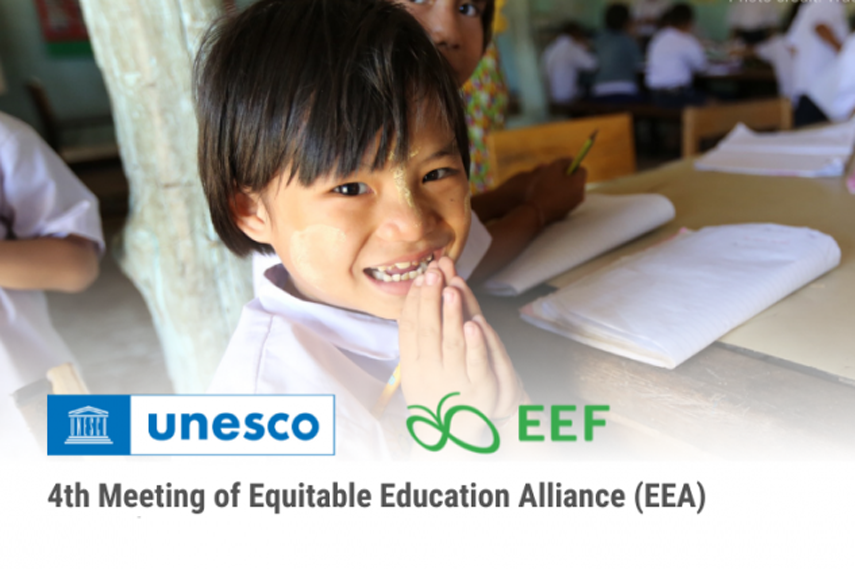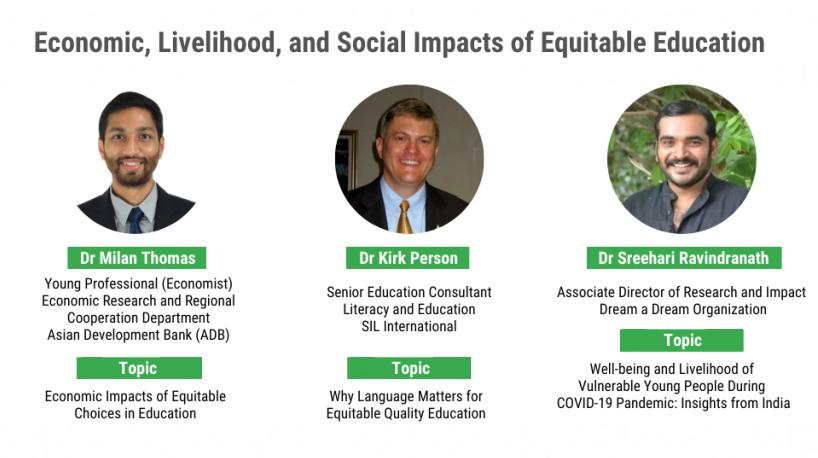
The Equitable Education Fund (EEF) in collaboration with the United Nations Educational, Scientific and Cultural Organization (UNESCO) organized the 4th Alliance for Educational Equality Conference on, “Economic, livelihood and social benefits of educational equity,” with 3 leading gurus in the economic, educational and social world sharing their experiences from the survey results and useful information to enhance the educational equity development in countries around the world under the cooperation from relevant agencies among countries as the Alliance Network for Educational Equity.
Dr. Kraiyos Patrawart, manager of the Equitable Education Fund (EEF), said that the overall outlook of education has changed in a negative direction since the COVID-19 crisis. Schools have to adapt to distance learning worldwide, causing education to become more inaccessible for some students, especially those from poor families, marginalized groups, migrant workforces, and immigrants.
Dr. Kraiyos concluded that EEF recognizes the importance of educational equity and equality. This doesn’t just mean making education accessible to everyone. However, there are still other factors to help upgrade the educational system to the next level. The six important factors are as follows:
1) Legal framework for innovative educational budget allocation
2) Potential to produce teachers
3) Area-based management with promotion and support for local leadership
4) Lifelong education
5) Technology and information system
6) Partnership and alliance cooperation
Many views were shared with Milan Thomas, an economist from the Economic Research and Regional Cooperation Plan, Asian Development Bank (ADB), Dr. Kirk R. Person, Senior Consultant for Education and Literacy of SIL International and a consultant on educational projects for UNICEF and UNESCO and Sreehari Ravindranath, Associate Director of Research and Impact of Dream a Dream Organization, through situational analysis.

Design a strategy to renew the education system
Milan Thomas said that there have already been many out-of-school children in the global educational system. However, the COVID-19 outbreak has caused even more children to drop out of school in the middle of the school year or opt – out of the educational system. In addition, Thomas pointed out that there are two main factors that must be done at this stage: redesign the educational system and improve the quality of teacher training by modifying the whole curriculum system, such as setting target groups and extending the study time. Moreover, the improvement of quality teacher training should be supported and facilitated, including teacher’s skills, especially digital skills, which could be useful for distance teaching among the disadvantaged and poor children in society.
Start with the basic “mother” language first
Dr. Kirk R. Person said that the key is to get children to learn best in their own “mother tongue.” Meanwhile, teaching and learning based on the basic curriculum of most schools worldwide today can be divided into two main systems: the official language and the bilingual system (one being the English language). Both are incompatible with the children’s learning nature. What are children learn well only when they can understand what they are learning? Therefore, teaching by using the mother tongue that children understand and focusing on basic skills of learning, i.e., listening, speaking, reading, and writing, will help children to upgrade their abilities and develop further in their advanced education very well. According to Dr. Person’s opinion, turning to adjusting the course of teaching and learning based on the learners’ mother tongue is the most cost-effective solution to address educational equity due to its low costs, but with lots of outcomes. It also guarantees the literacy of minorities, poor children, and marginalized and disadvantaged children in society, which are often the most overlooked or the most often left behind groups.
School: A place to nourish life and spirit
Dr. Sreehari Ravindranath, a psychologist, said that school is not only a place where children come to learn academically for listening, speaking, reading, and writing skills, but is also the second “home” for them, especially those in the vulnerable group of the society. A school is a safe place where children can run, play, eat and sleep, including getting hygienic care. Thus, school is a place where children have the opportunity to develop their physical and spiritual capabilities.
Dr. Ravindranath suggested that during the need to redesign the educational system, schools and educational institutions worldwide should take this opportunity to develop their learning areas to cover and emphasize the importance of life skills, well-being, and mental health.
Dr.Ravindranath gave an example of the “Happiness Curriculum” which is implemented in schools across India. One of the subjects taught in this curriculum is teaching children to meditate and learn yoga. So, children become patient and flexible with a strong mind and gain the ability to adjust to different situations very well. Besides, learning with a focus on lifestyles, communities, and experiences can enhance the children’s learning and it will open up the more vulnerable children to schools. Therefore, education that everyone can participate in and access will help create a sustainable equity in education.
Power of networks to create educational equity
Dr. Kraiyos emphasized that investing to achieve educational equity is the key to truly improving an individual’s quality of life and helping accomplish the goal of sustainable development (SDG4). With the support and empowerment of the disadvantaged children in the society, we can be confident that the life, family, and well-being of those children will surely improve.
Therefore, building an alliance network of educational equity of EEF needs can enable society to move forward and cooperate with agencies related to education to manage important bodies of knowledge towards the enhancement of quality education and expansion of partnership networks to cover all aspects.

